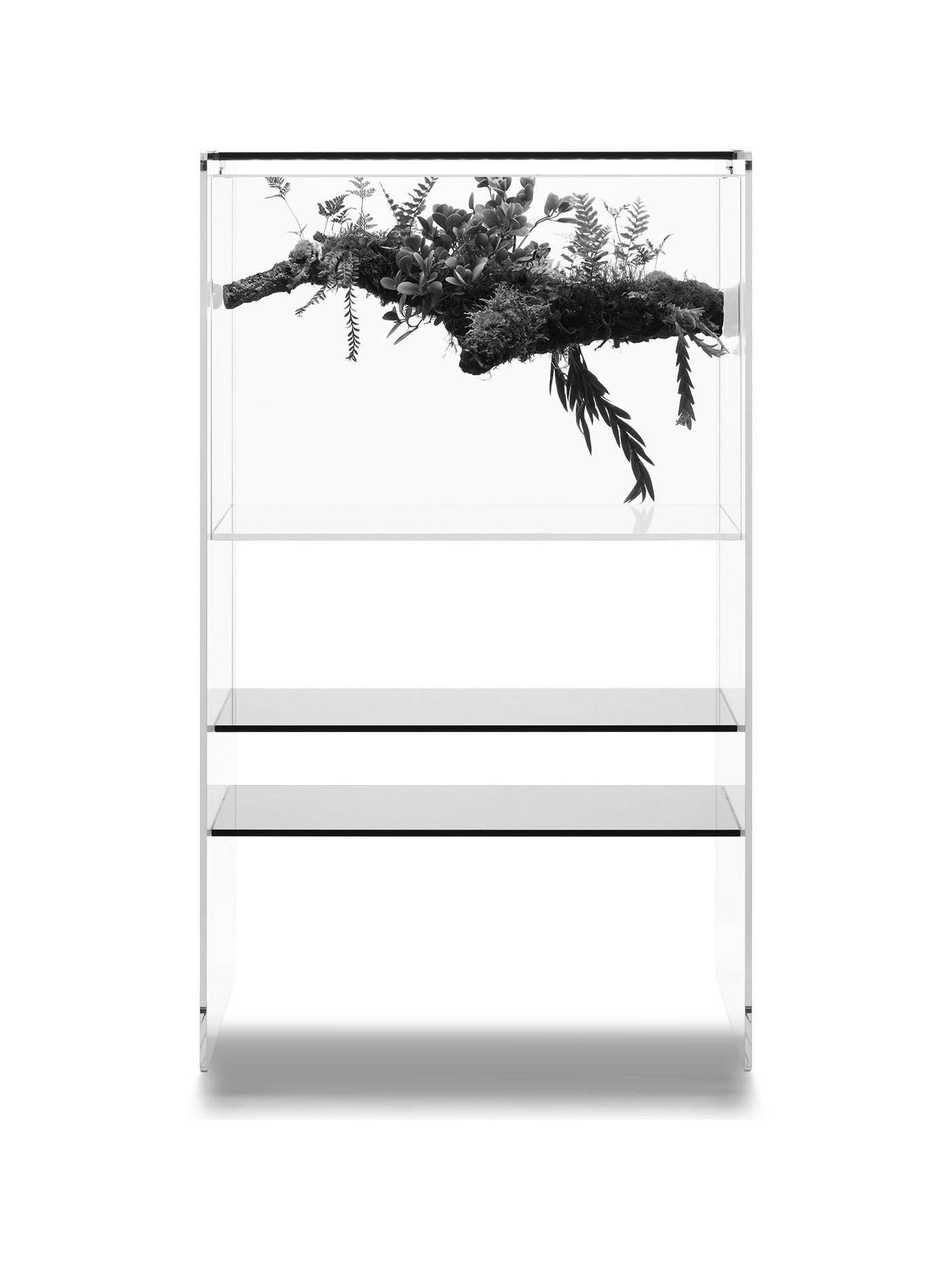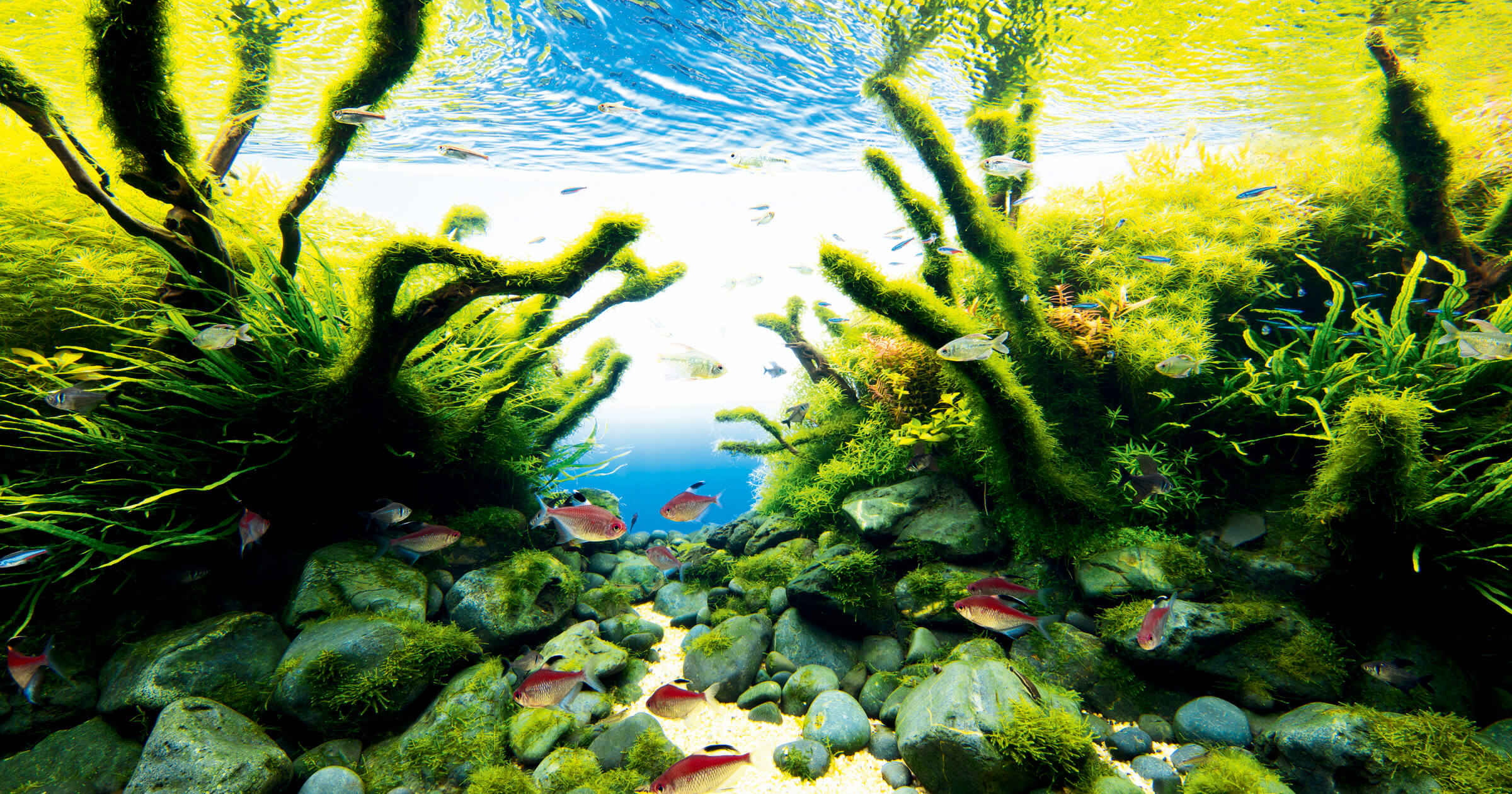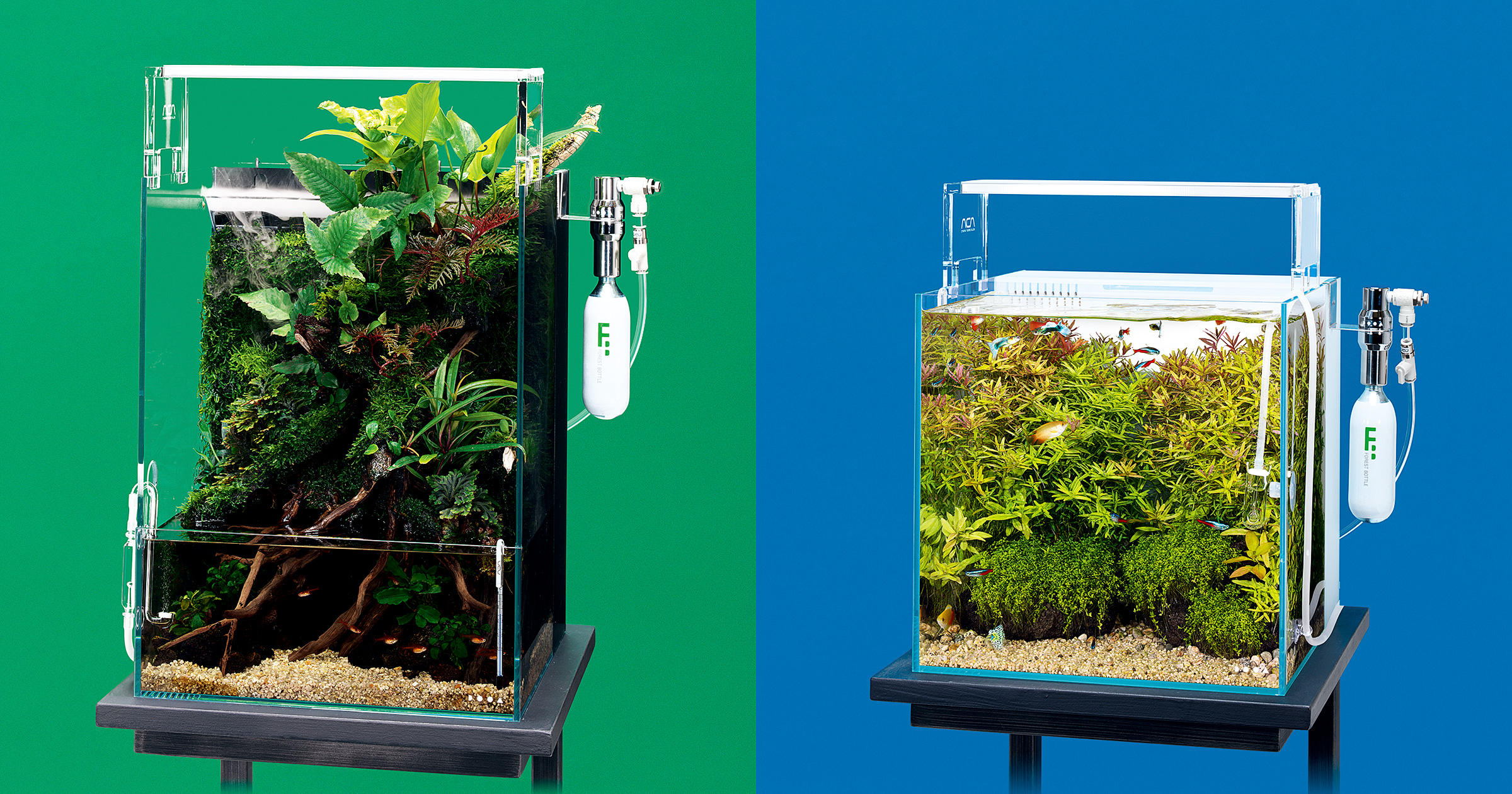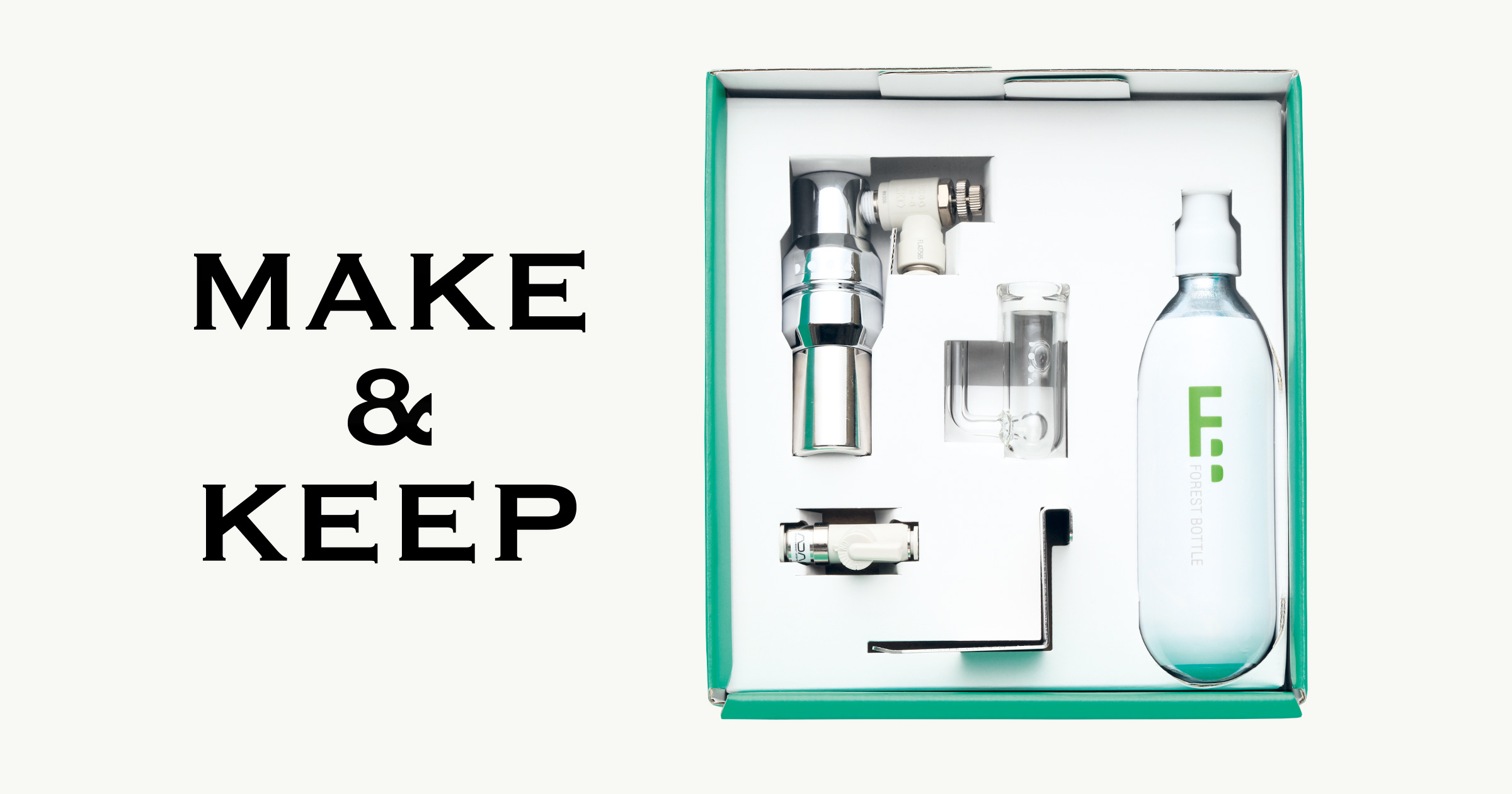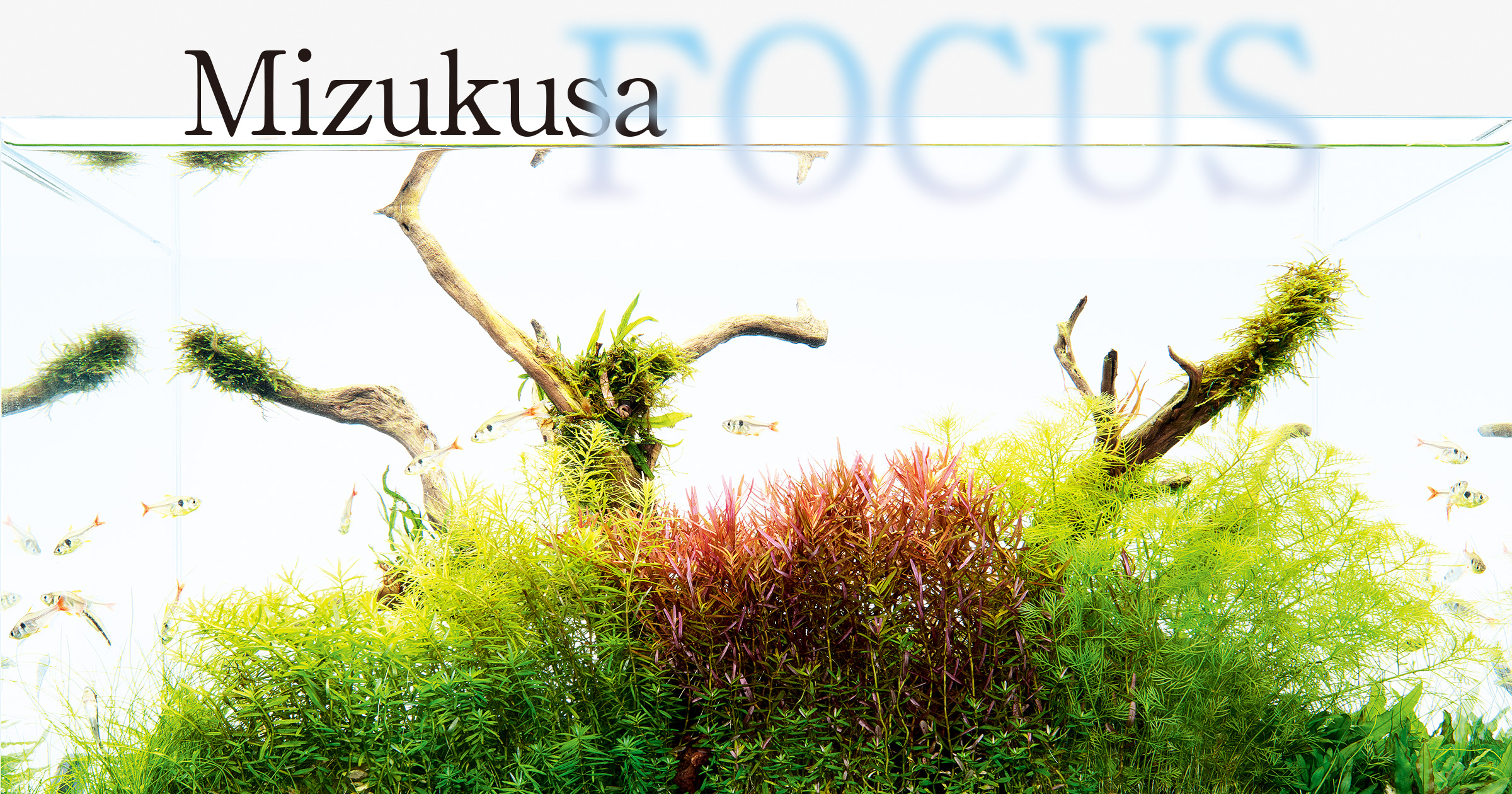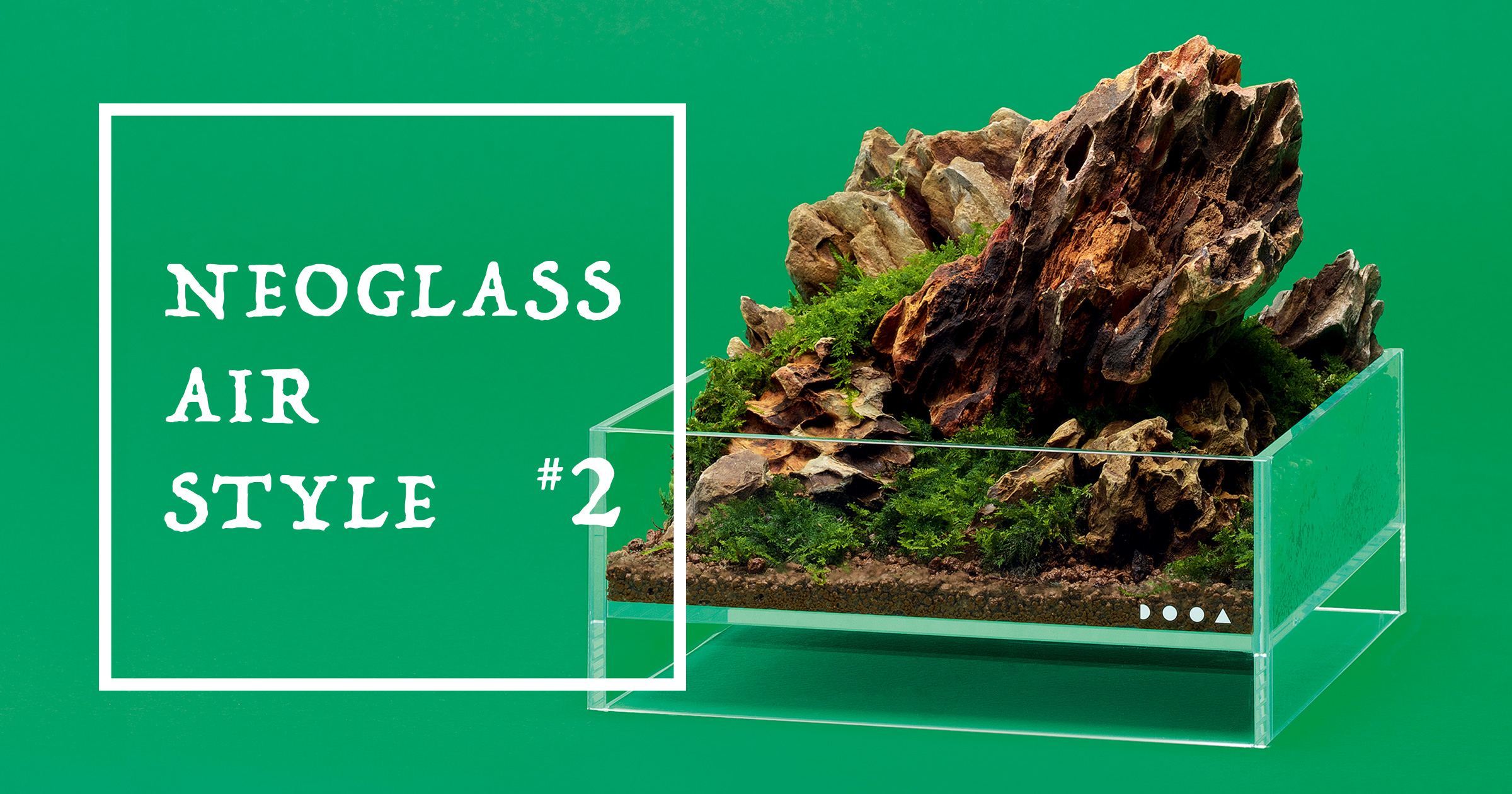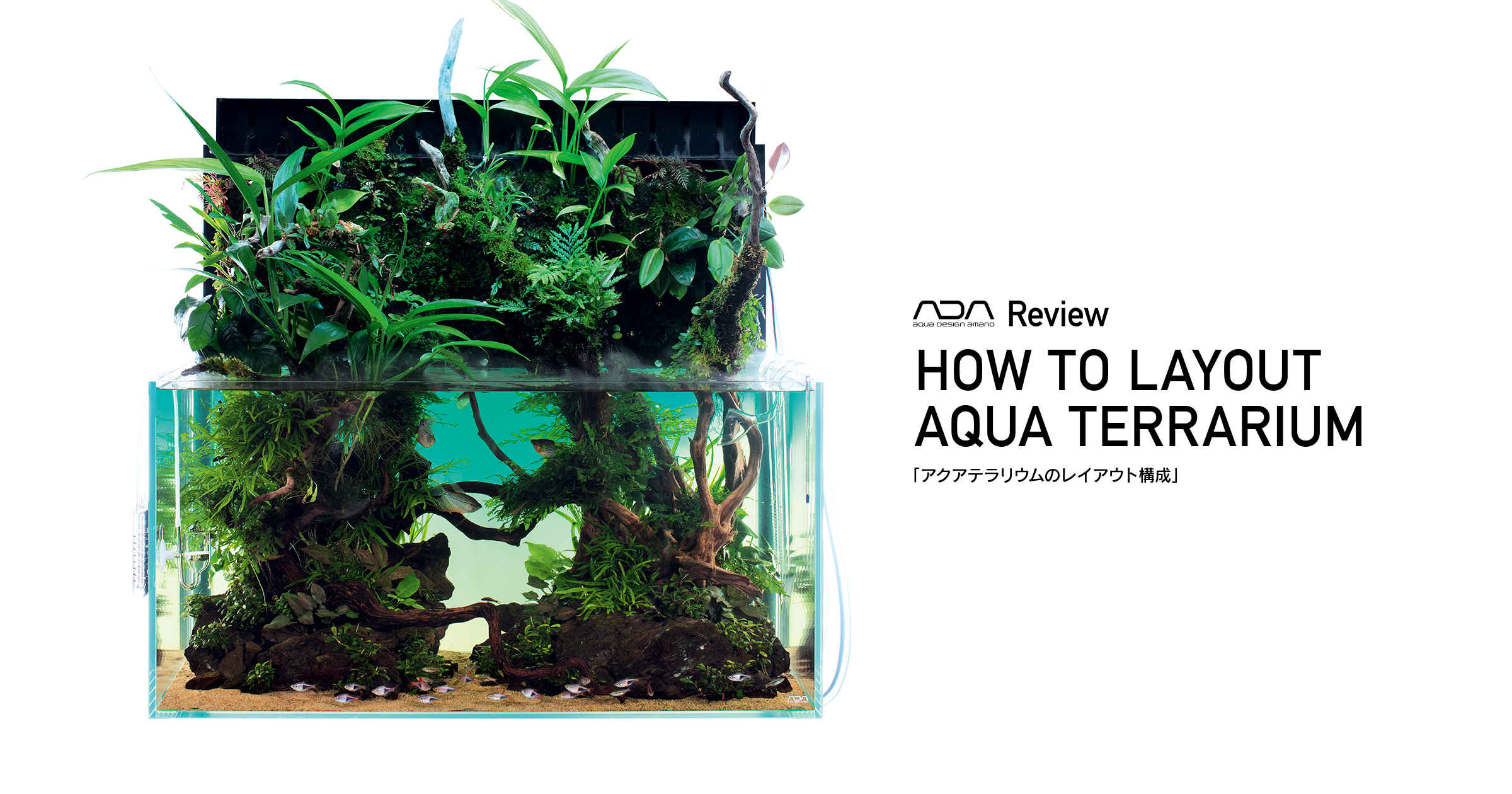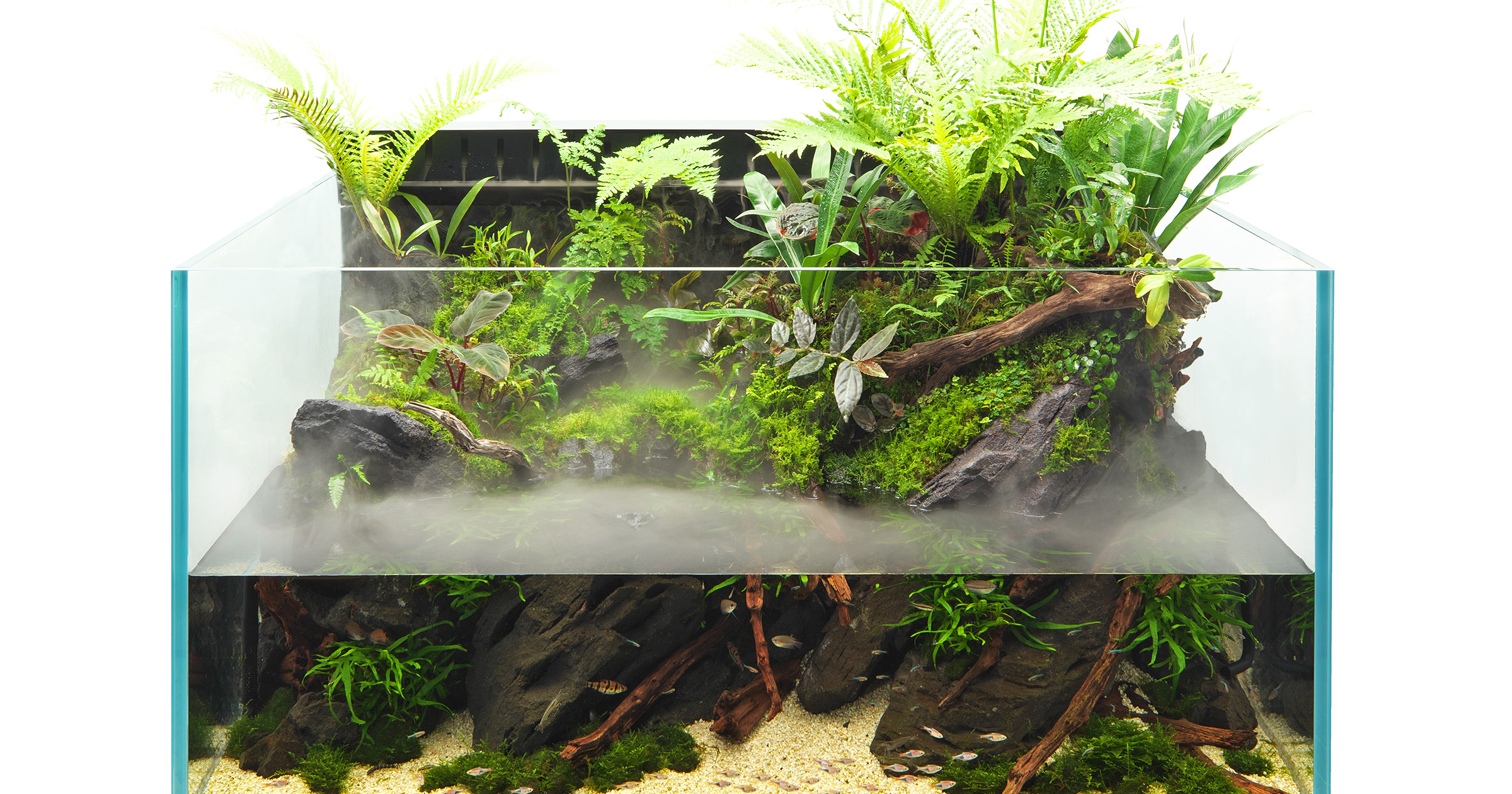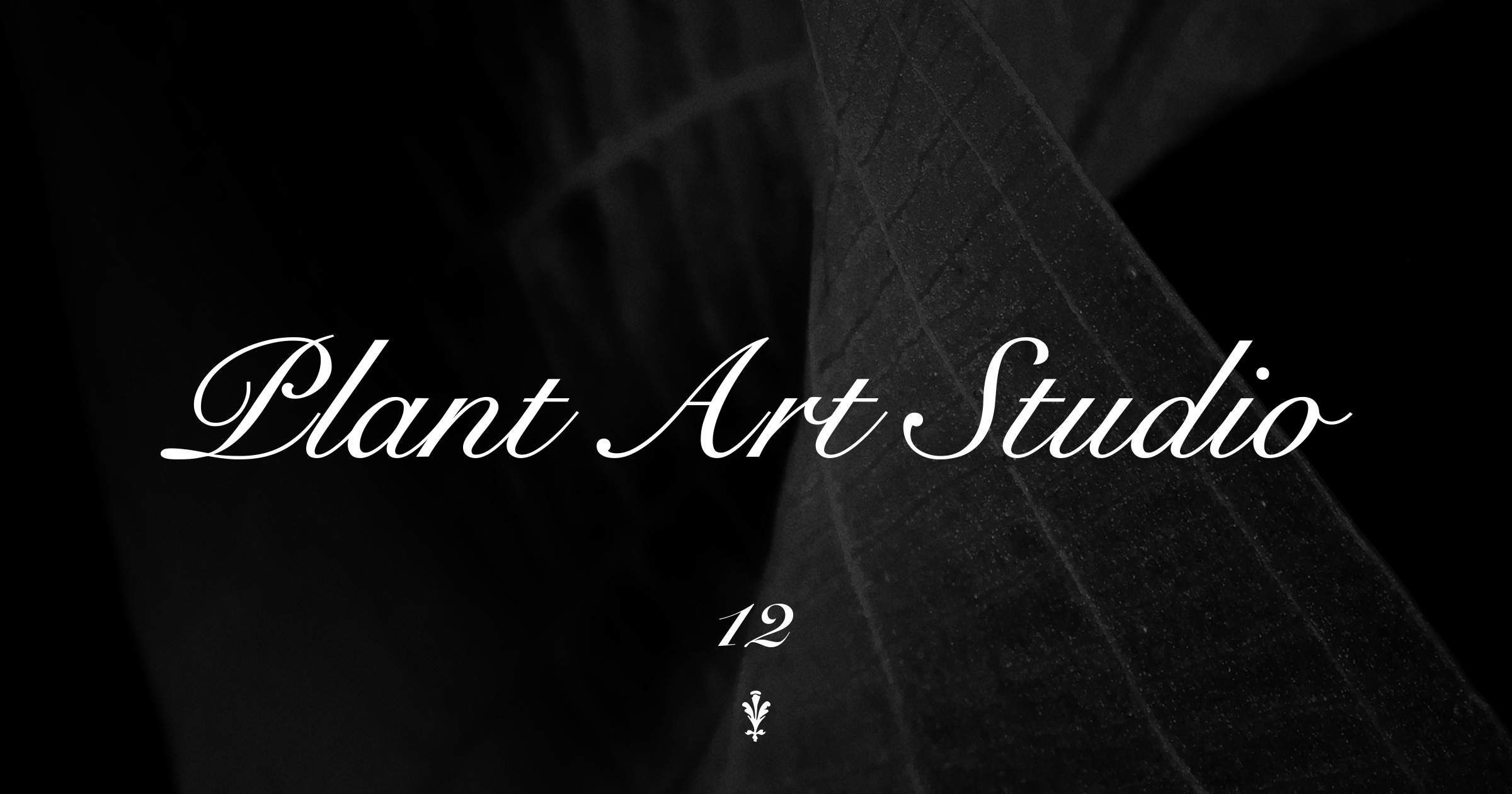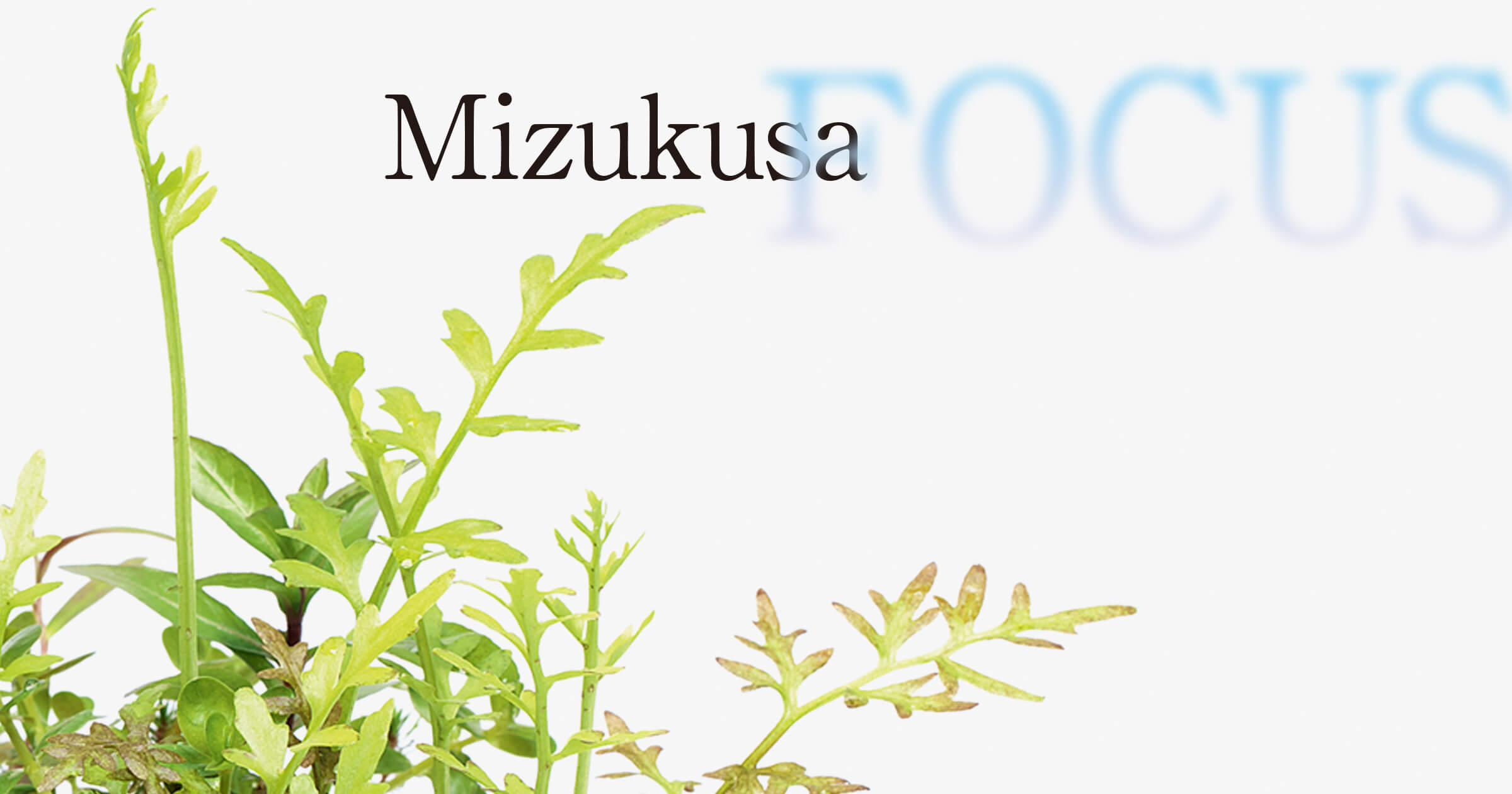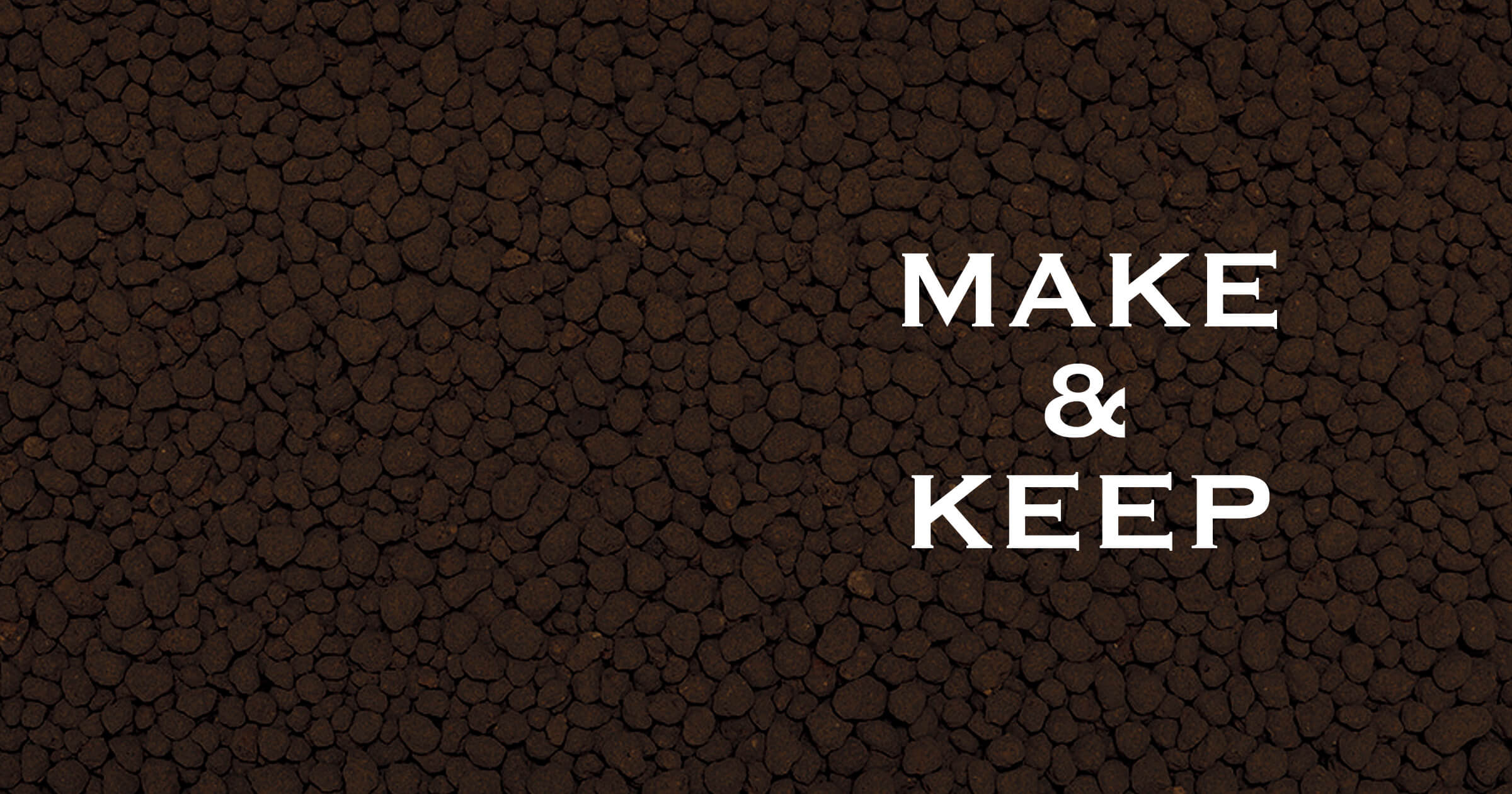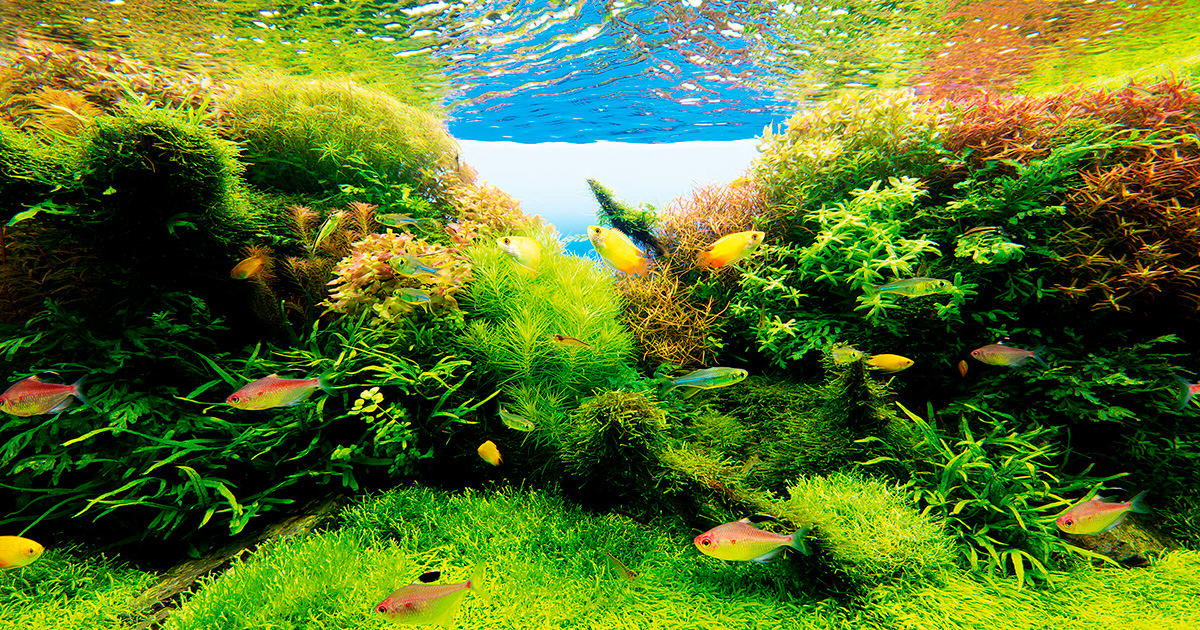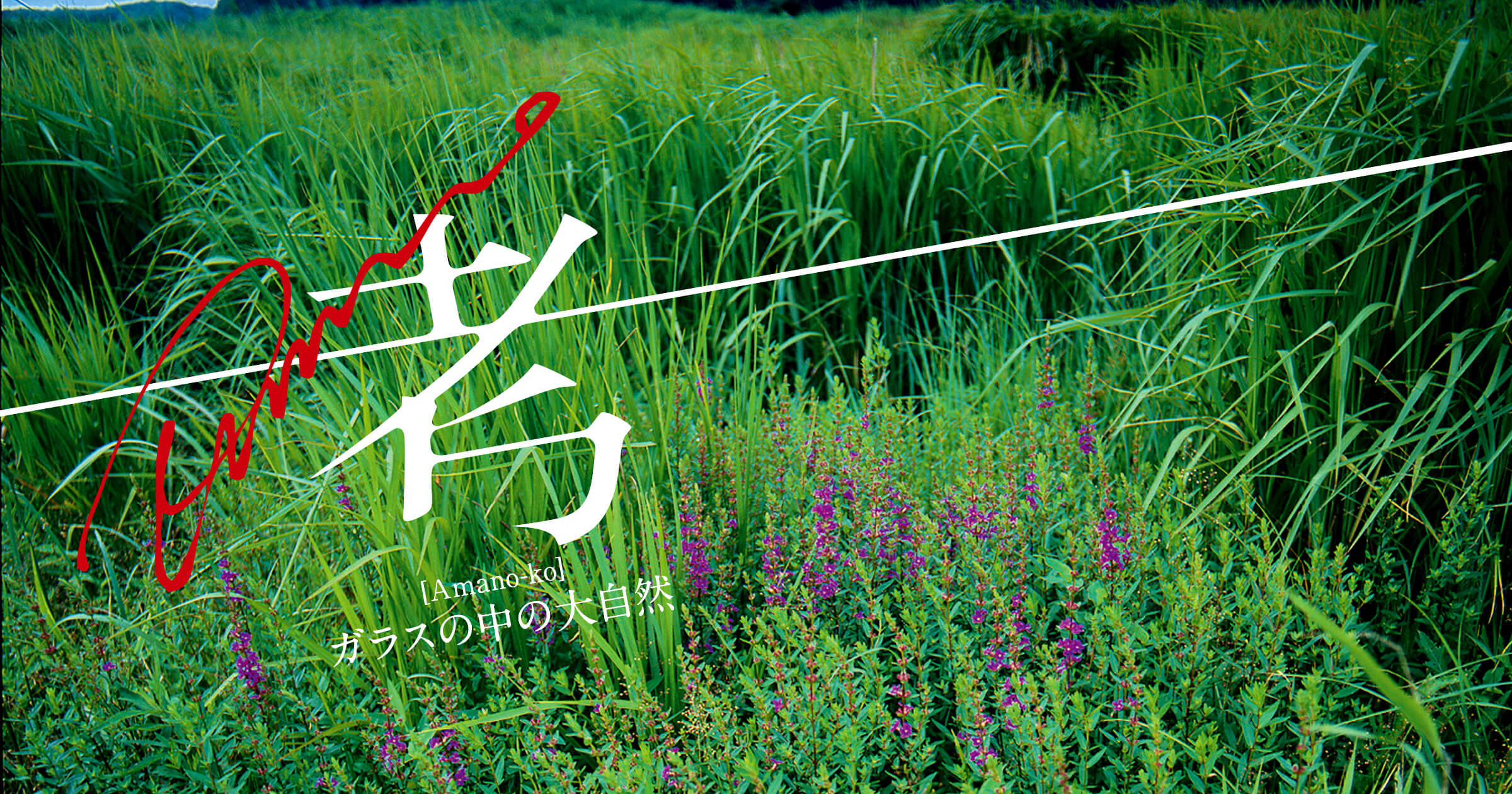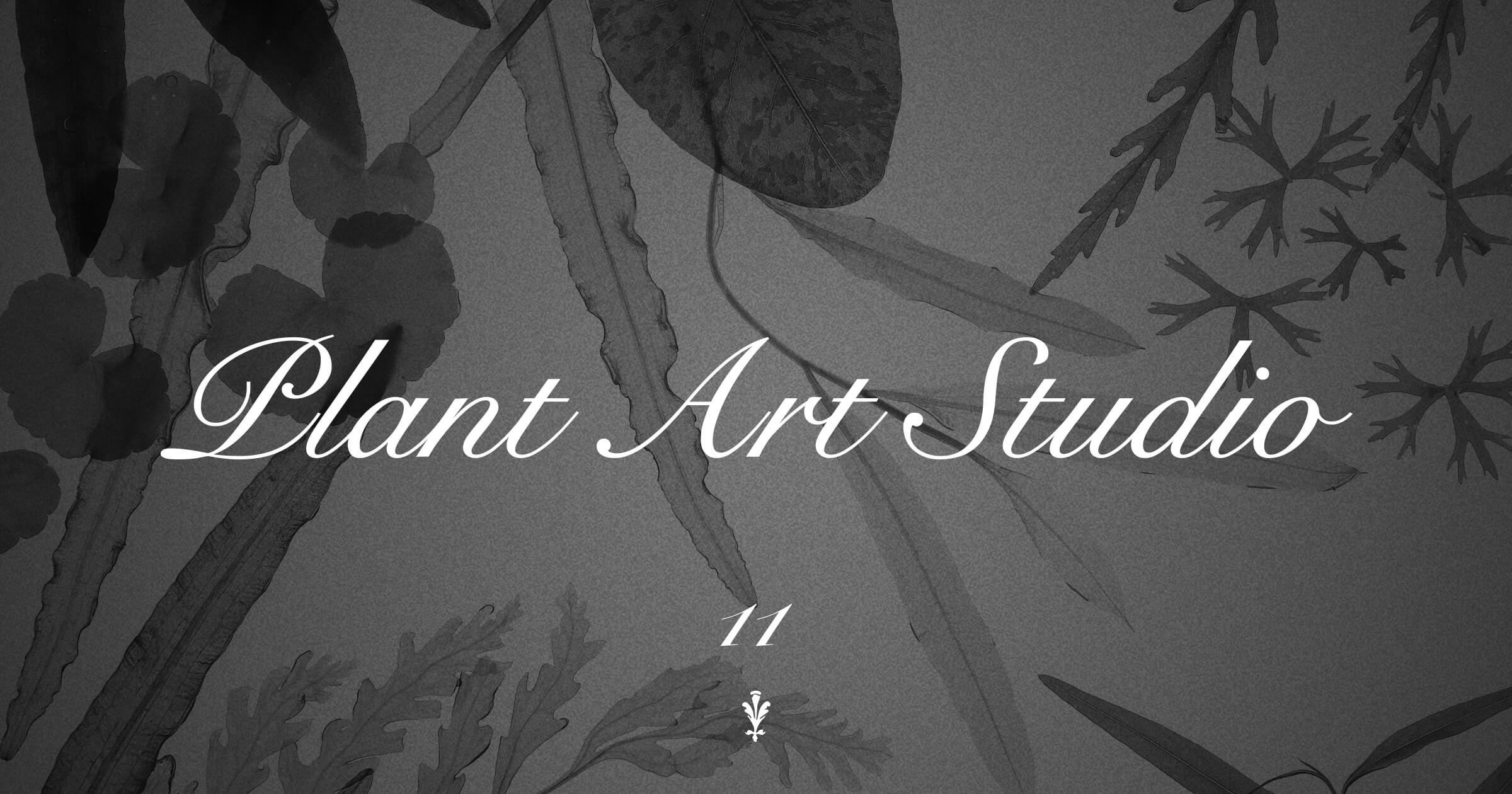NATURE IN THE GLASS ‘Spring in winter’
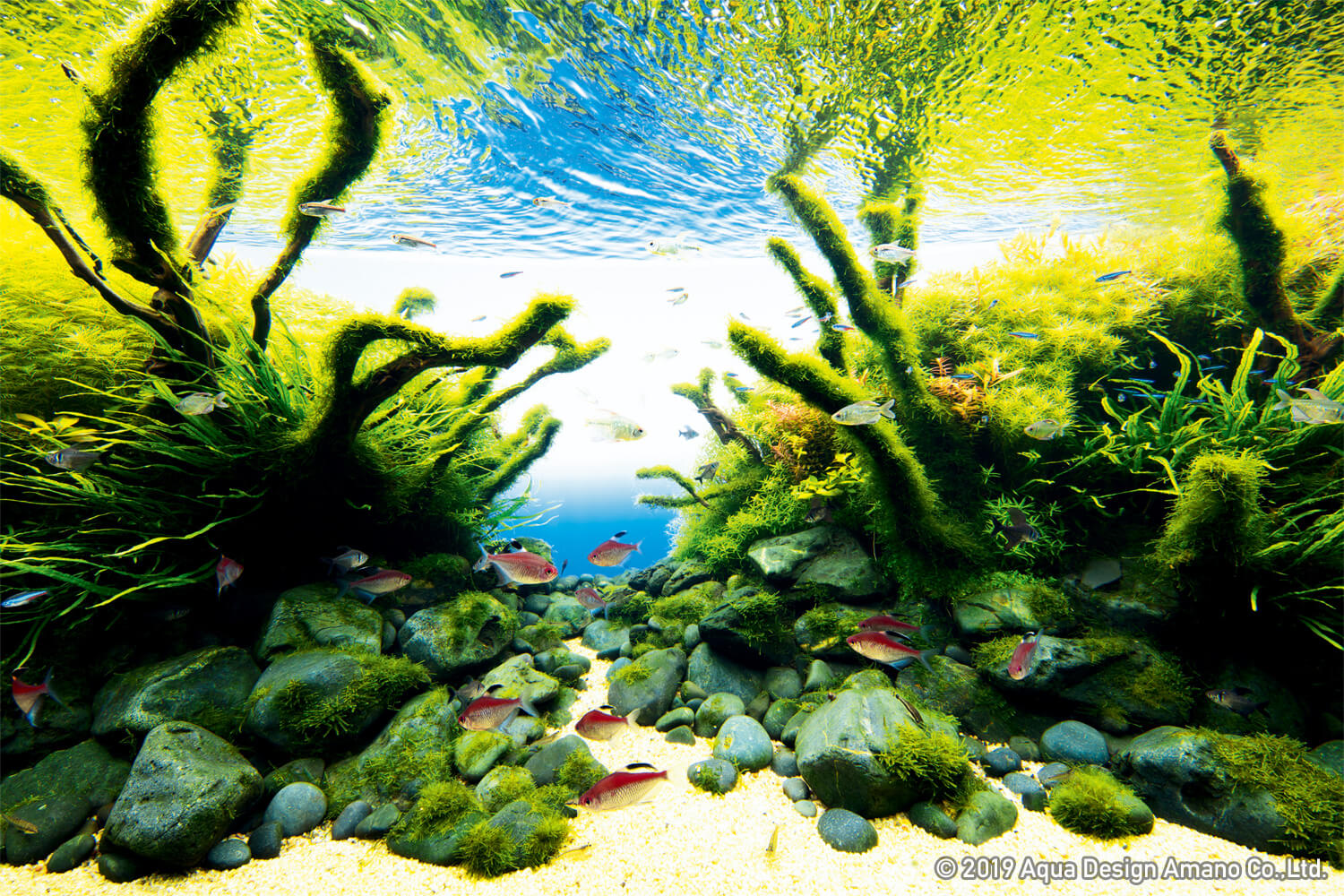
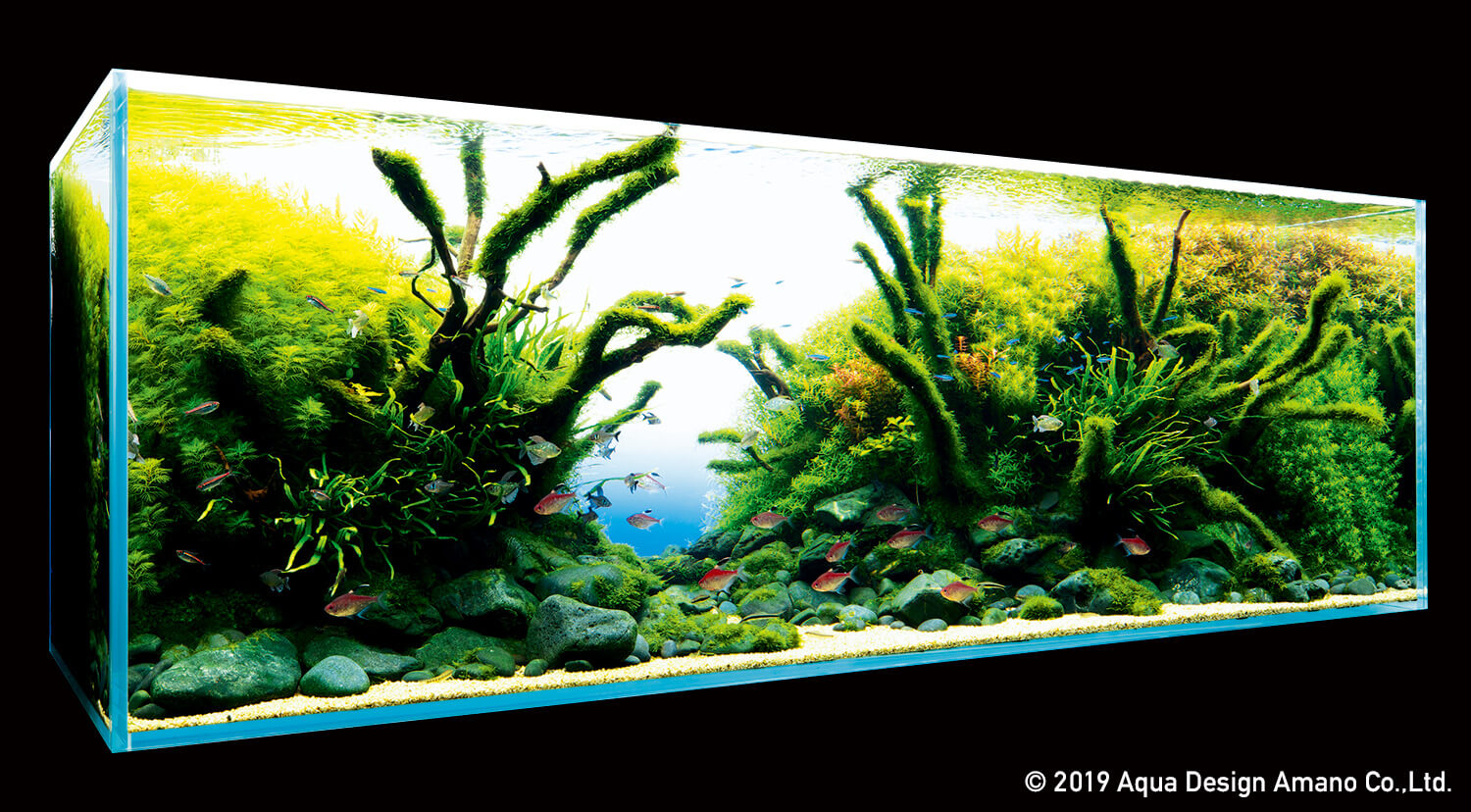
‘Spring in winter’
The composition of driftwood and river stones added the sense of depth to this layout.
The aquascape depicts the mountain stream in spring with the bright coloration of the stem plants.
You can produce a layout in many ways, such as starting with a composition, based on the aquatic plants that you want to use, or starting with a concept. Although I often start one by coming up with a concept, I put priority on the composition in this layout to produce an aquascape with a sense of depth. I decided to produce a layout with a concave composition in a 180 cm aquarium and aimed to draw the viewer’s attention to the open space in the center through the arrangement of the driftwood and stones in order to add a sense of depth. I wanted to create an image of the mountain stream of Oirase and selected Hakkai Stones for the roundish shape and somewhat long Branch Wood as layout materials. Aquatic plants were arranged in such a manner that red stem plants will peek through green bushes to create an impression of the Oirase mountain stream in spring.
DATA
Shooting date: June 9th, 2017(ADA)
Creator: Daisuke Inoue
Aquarium: Cube Garden W180 x D60 x H60 (cm)
Lighting: Solar RGB x 3, turned on for 10 hours per day
Filter: Super Jet Filter ES-2400 (Bio Rio L)
Substrate: Aqua Soil – Amazonia, La Plata Sand, Power Sand Advance L, Bacter100, Clear Super, Tourmaline BC
CO2: Pollen Glass Beetle 50Ø, 5 bubbles per second via CO2 Beetle Counter (using Tower)
Aeration: 14 hours after the light is turned off using Lily Pipe P-6
Additives: Brighty K, Green Brighty Mineral, Green Brighty Nitrogen
Water change: 1/3 once a week
Water quality: Temperature: 25ºC
pH: 6.8; TH: 20 mg/l
Aquatic Plants:
Hemianthus micranthemoides
Myriophyllum mattogrossense ‘Green’
Rotala Nanjean
Ludwigia repens
Rotala rotundifolia ‘Green’
Rotala sp. ‘Wayanad’
Rotala sp. ‘Ceylon’
Rotala sp. ‘Hra’
Scrophulariaceae sp.
Microsorum sp. ‘Narrow Leaf’
Taxiphyllum barbieri
Vesicularia montagnei
Fish & Invertebrates:
Paracheirodon simulans
Hemigrammus erythrozonus
Hyphessobrycon megalopterus
Hyphessobrycon pyrrhonotus
Moenkhausia pittieri
Characidium fasciatum
Crossocheilus oblongus
Otocinclus sp.
Caridina multidentata
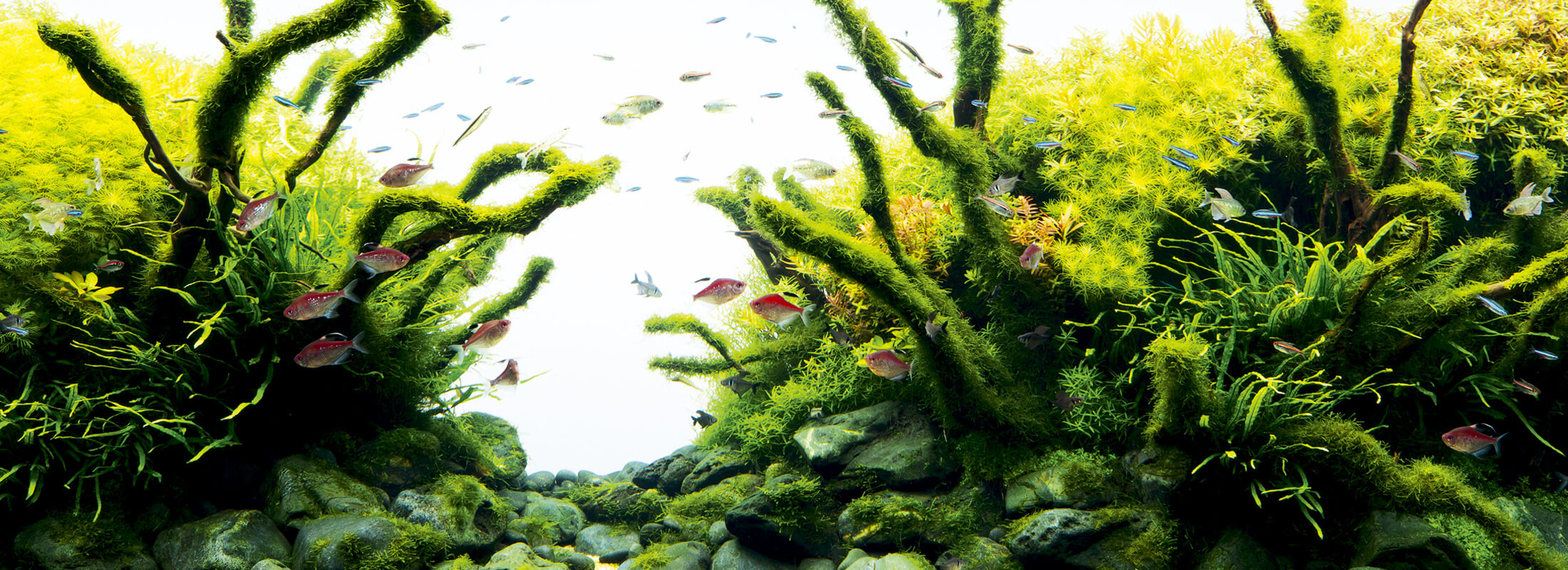
The composition of the layout was created first by arranging layout materials and substrate was added in the front and the rear of the arrangement.
In Nature Aquarium, the substrate is often built first and layout materials are arranged afterward. Occasionally, layout materials are arranged first and then the substrate is added. The latter method is convenient for a layout in which a thin layer of cosmetic sand is placed in the foreground. Since the Hakkai Stones, which are the primary layout materials for this layout, are round, gaps form between the arranged stones. This became a problem since Aqua Soil that was placed in the rear of the stones tended to spill though the gaps and come out toward the front of the layout. Therefore, flat Sansui Stones were placed first as the base for the Hakkai Stones without any gap to retain the soil, and Hakkai Stones were placed on top. Doing so made it easy to maintain the aquascape.
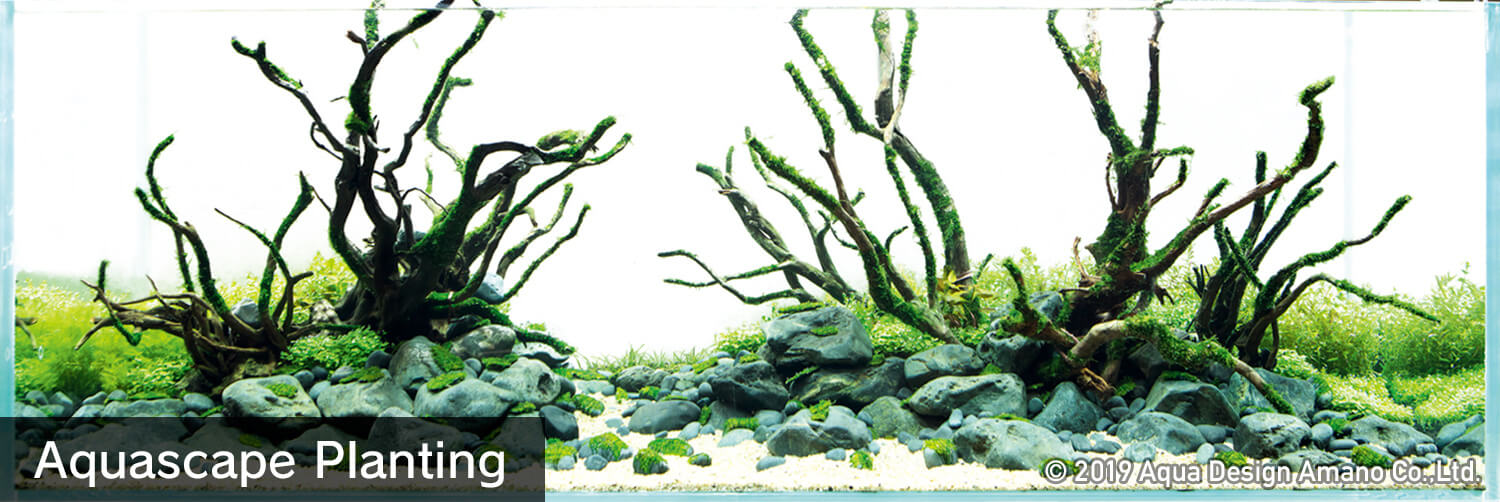
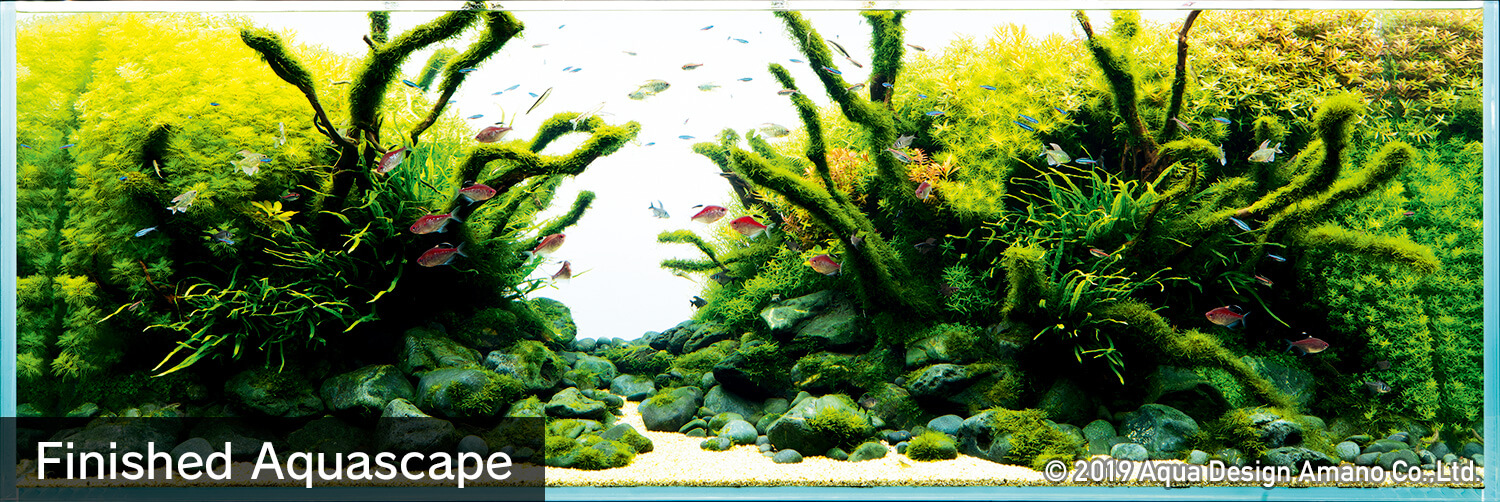
The appearance of the layout right after planting. It is apparent that the layout composition draws the viewer’s attention to the open space in the center by the placement of the driftwood.
Photographed on January 26, 2017
Photographed on January 26, 2017
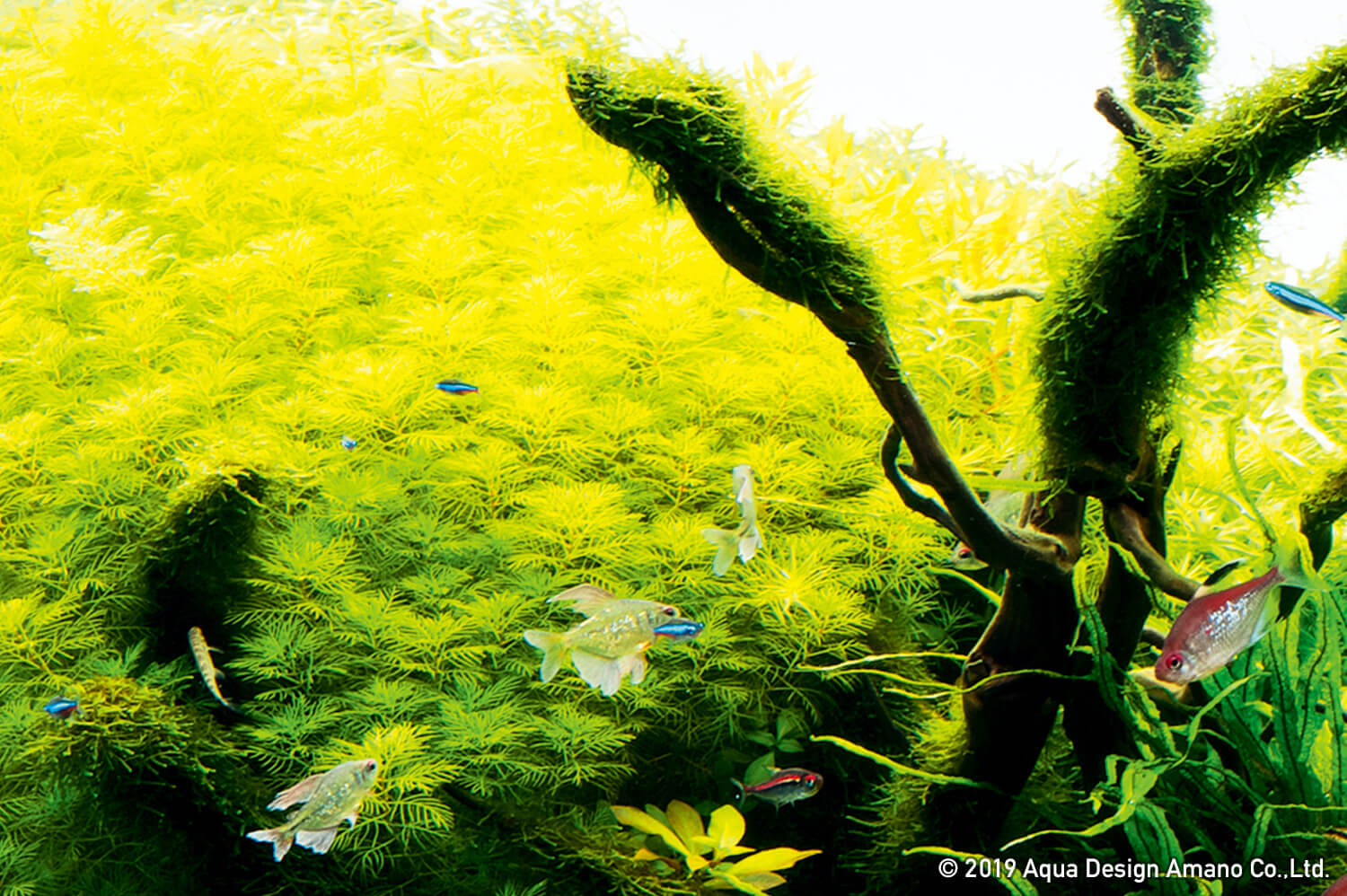
The impression of the fresh green leaves of spring was produced with the bright green stem plants. Voluminous stem plant bushes were shaped by proper trimming.
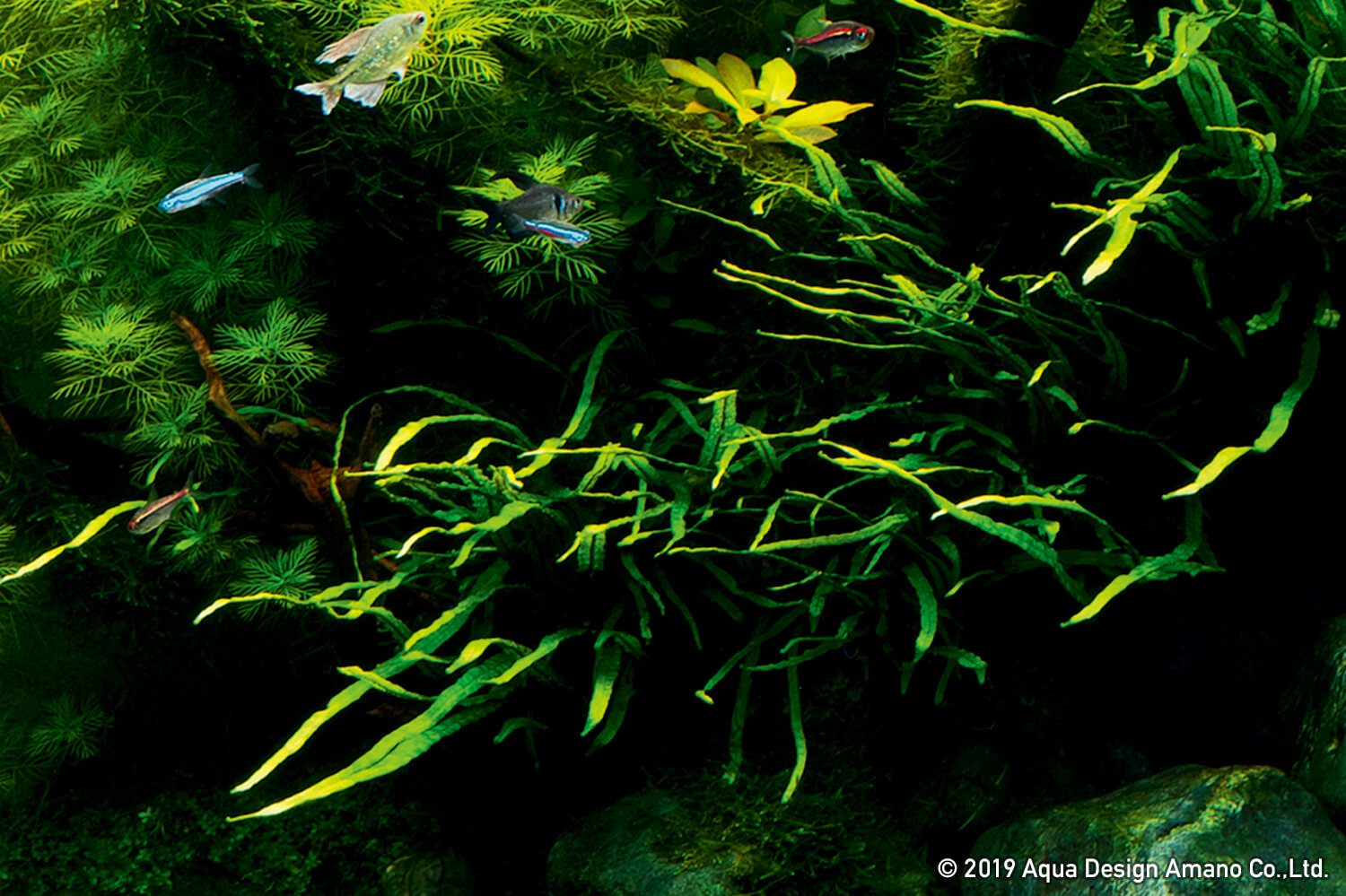
Microsorum was planted at the base of the driftwood to create an impression of sciophytic plants that grow on the forest floor, such as ferns.
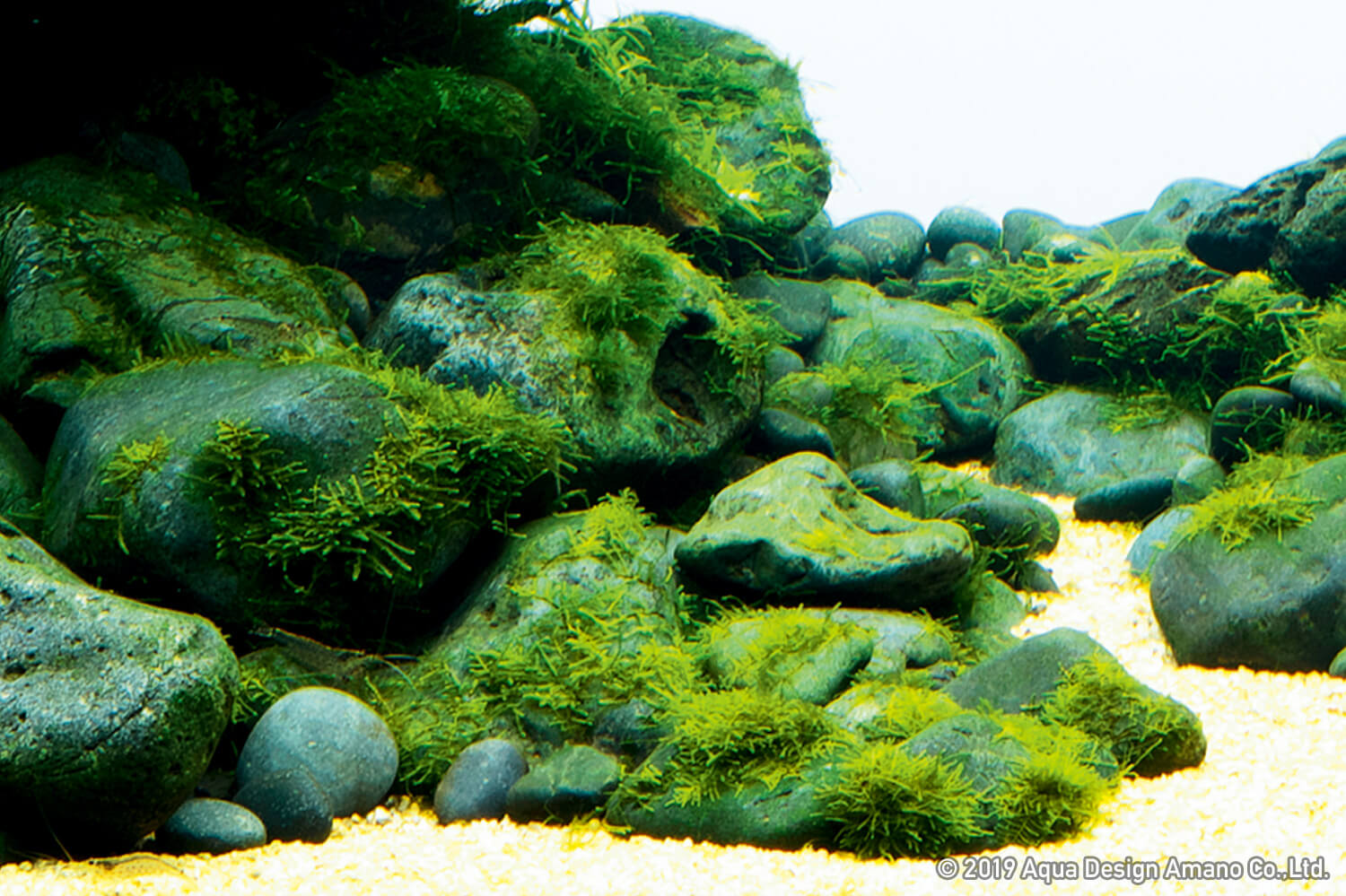
Round Hakkai Stones were selected to create the impression of river stones in a mountain stream. Stones were partially covered with Vesicularia montagnei to produce an atmosphere of the mossy Oirase mountain stream.
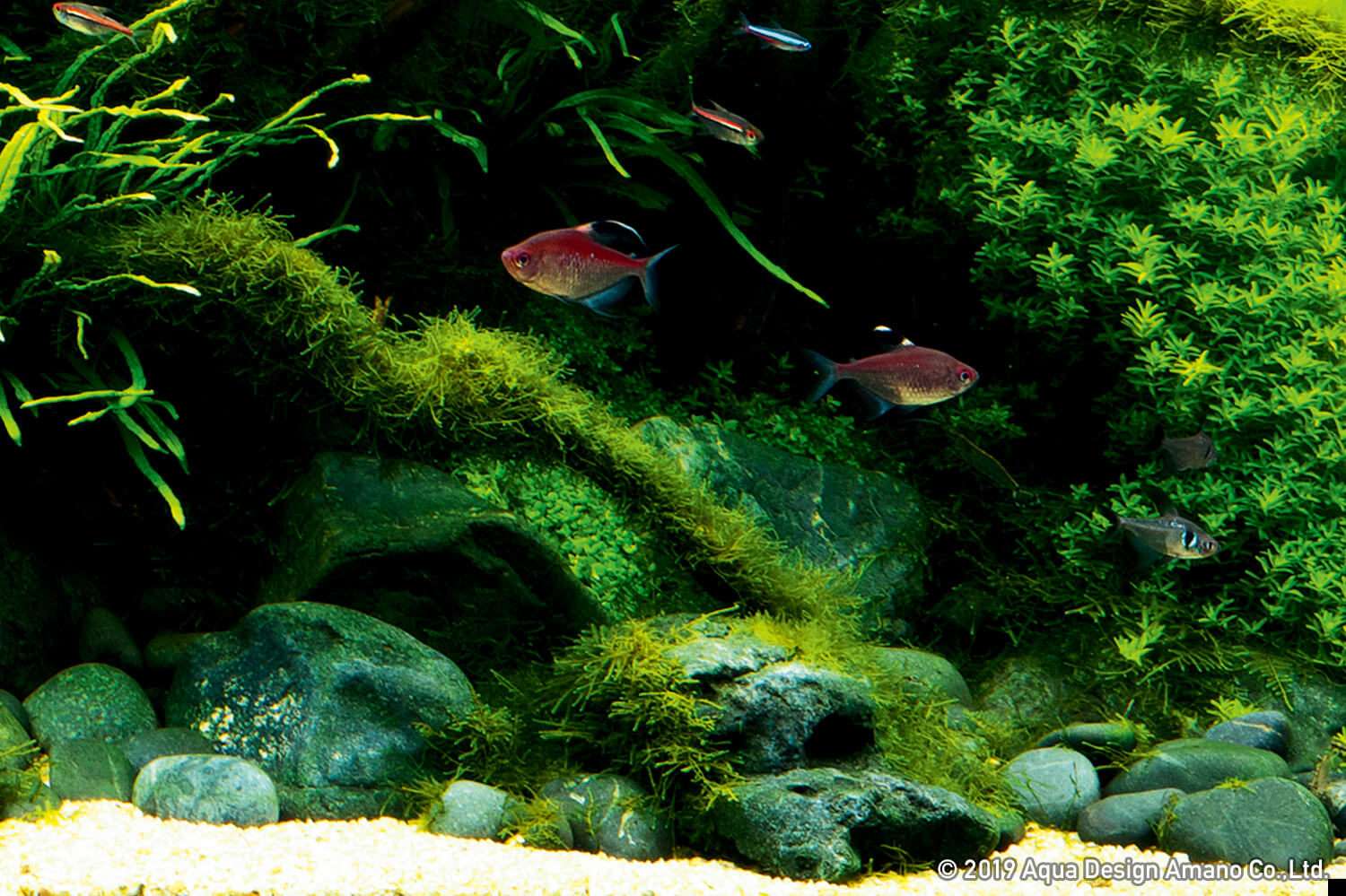
The Sansui Stones placed as the base separate the Aqua Soil in the rear and the cosmetic sand in the front.
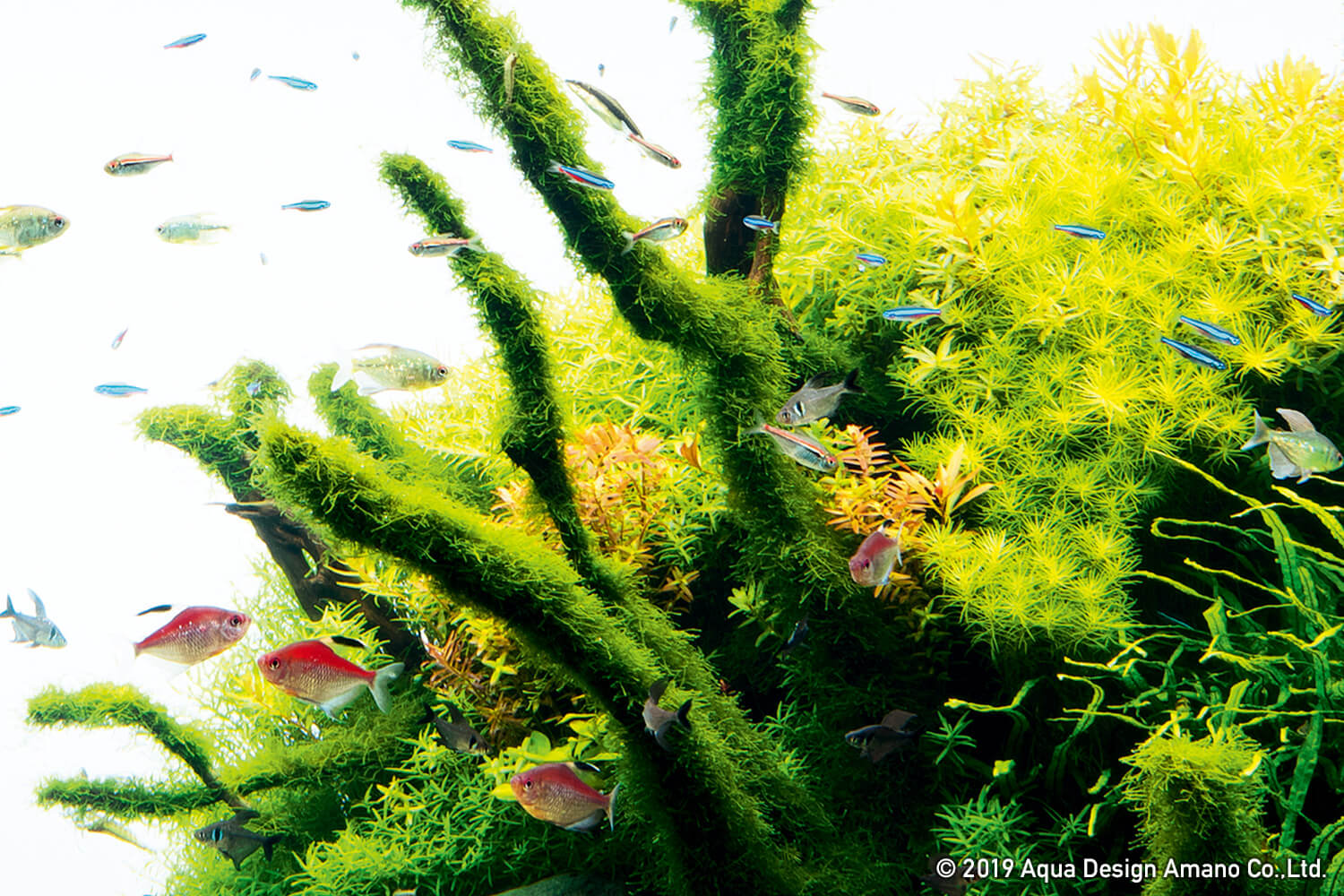
The red stem plants were planted to depict the azalea that adds color to the Oirase mountain stream in spring. The Oirase mountain stream in Aomori prefecture is one of the places that Takashi Amano used as a model for creating a natural impression.
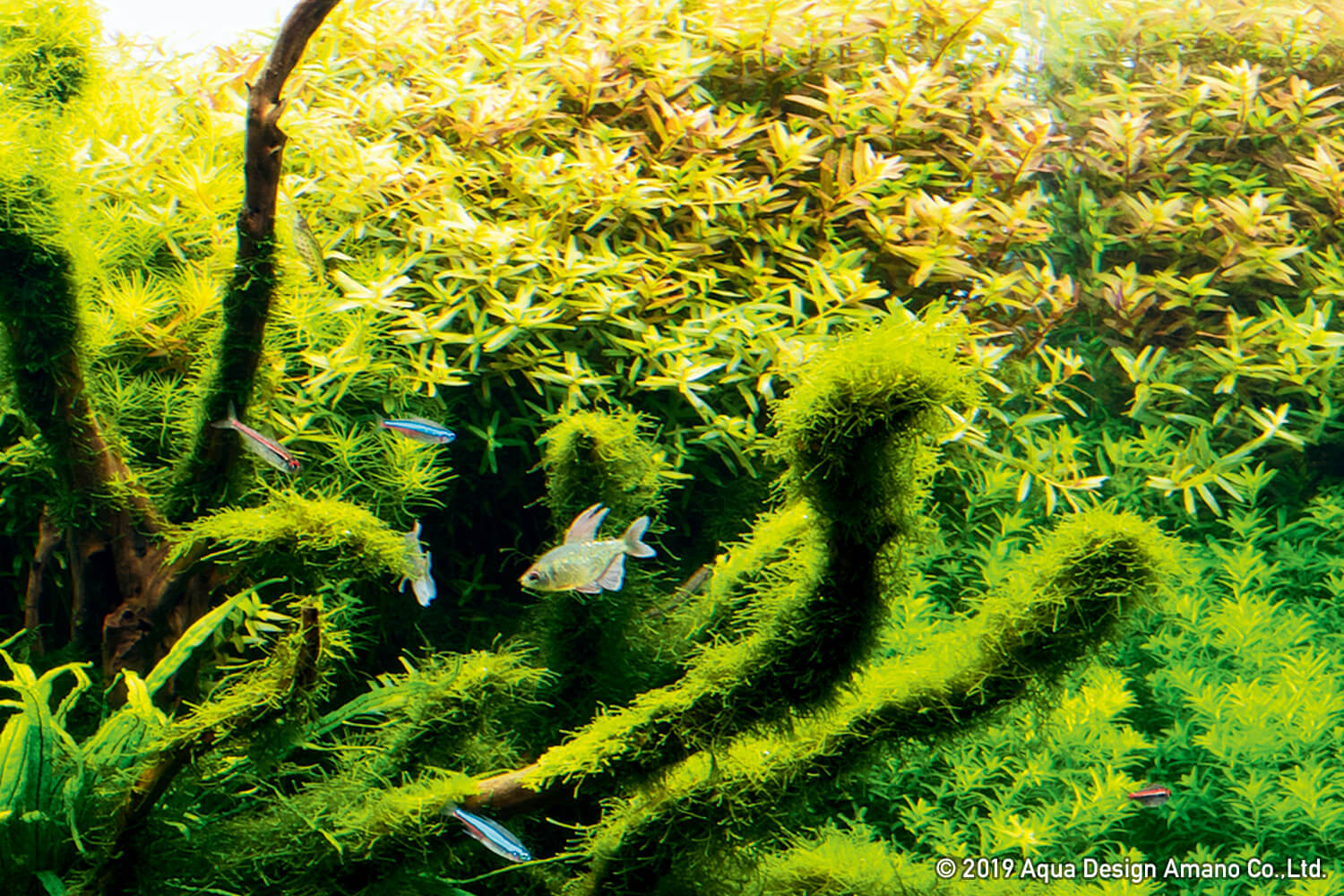
The atmosphere of Wabi-Sabi was produced by growing Taxiphyllum barbieri over the driftwood. The brightness of the stem plants was enhanced by the color contrast between them.

